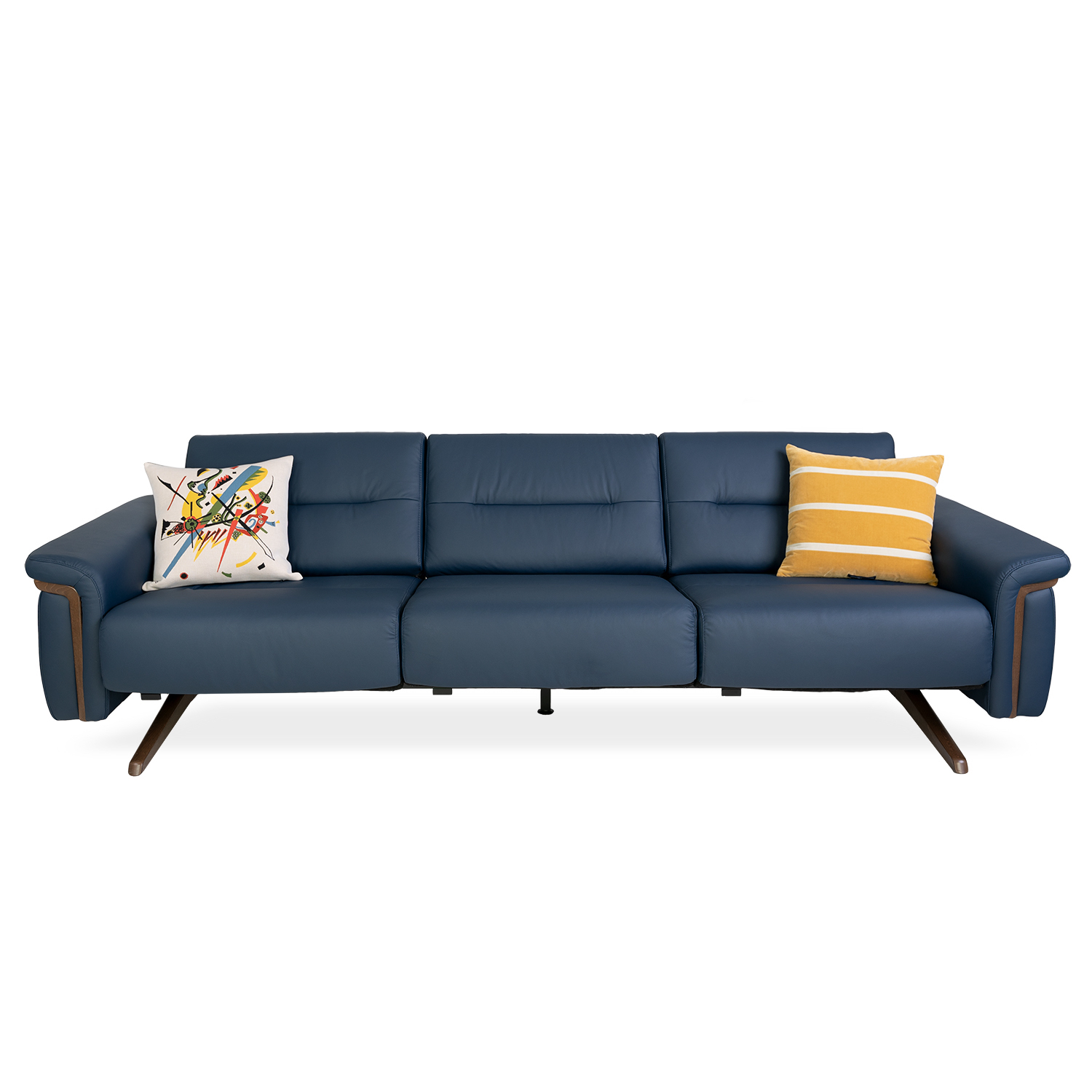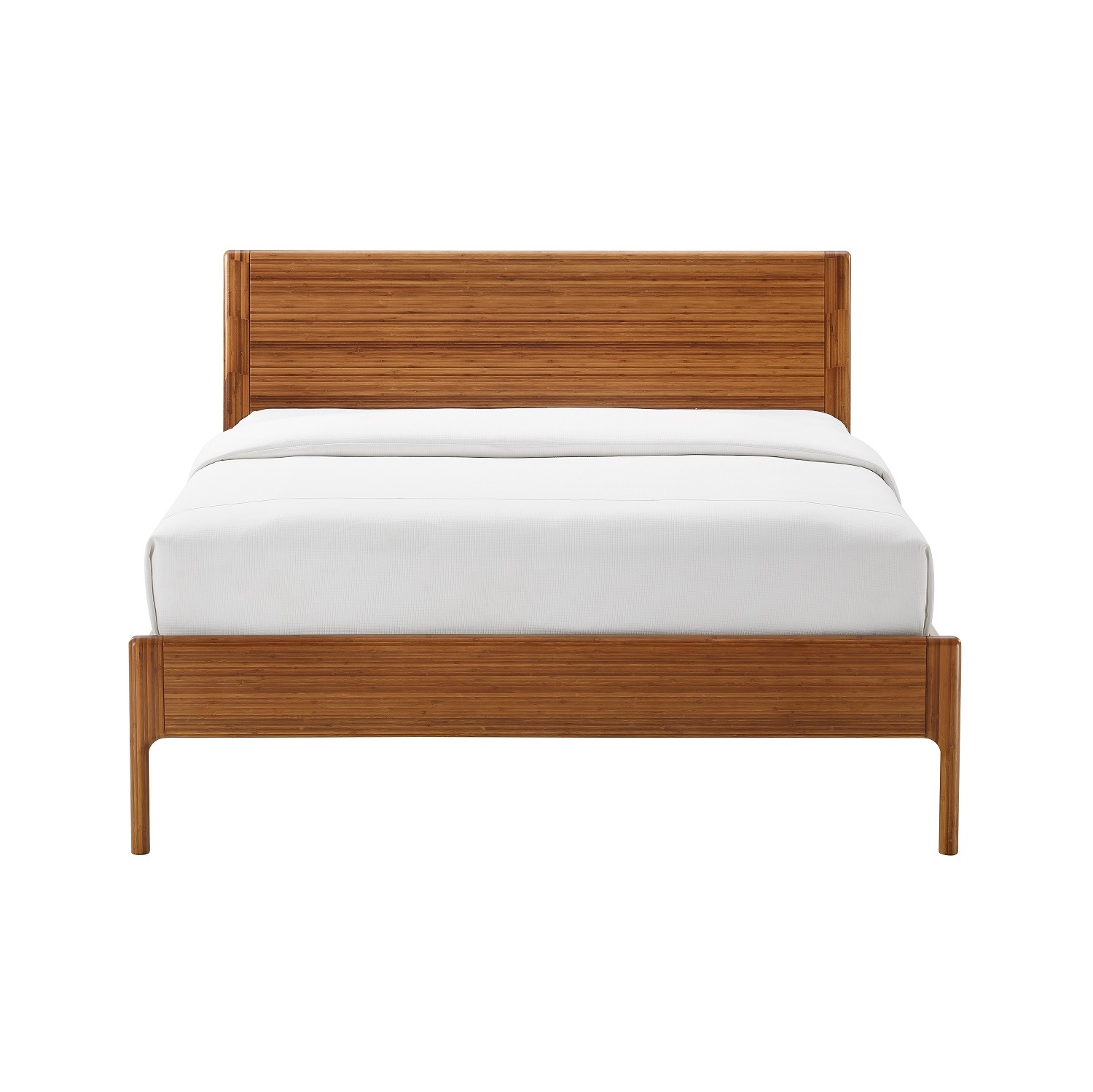It’s more important than ever to reduce our environmental impact – and also to look after our own minds and bodies. Choosing furniture that’s both comfortable and sustainably made is one way to take care of both our planet and ourselves. That’s why Copenhagen Living is proud to carry a range of furniture pieces that are designed to be elegant, relaxing, and environmentally conscious. Below, browse Copenhagen’s top furniture picks for sustainable seating, sleeping, and living.
Sustainable seating
Who doesn’t love the sensation of leaning back in a recliner and feeling the tension in your body melt away? When it comes to luxurious, ergonomically designed comfort, few chairs and sofas are better than Stressless® by Ekornes of Norway. And with Ekornes’ continuing dedication to sustainability, Stressless® furniture is both relaxing and responsible.
For instance, sit back and savor the moment in a Stressless® Sunrise Chair and Ottoman, featuring plush padding, leather upholstery, and a patented design that provides lumbar support at any angle. Or, for a choice the whole family will love, try the Stressless® Stella Sofa, with soft, wide seats and a mechanism that lets each seat adjust to subtle body movements.

These are just a few of the products Ekornes makes with sustainability in mind. Because Ekornes has its headquarters among the stunning fjords and mountains of Sykkylven, Norway, they are driven every day to make their practices as environmentally friendly as possible.
For instance, did you know that all Ekornes plants in Norway use renewable hydropower and are heated mainly with leftover wood chips? Specifically, in the Stressless® factories, 80% of waste is reused, recycled or used for energy recovery on-site, according to its sustainability report. The company produces their own polyurethane foam, which allows them full control over what chemicals are added. Leftover foam is used for cushioning, and leather scraps are sold to purveyors of small leather goods. Ekornes has also made continuing efforts to reduce electricity consumption and greenhouse gas emissions, as well as successfully phased out fossil oils for heating.
What’s more, Ekornes has earned several environmental certifications and commitments that verify its sustainability progress and goals. They are Environment Management certified, which means they are working to mitigate the ecological impact of their processes and products. A certification for FSC and PEFC means that Ekornes ensures materials such as wood and latex are sourced from responsibly managed forests. They’re also a member of the Leather Working Group, which supports responsible leather production, and a UN Global Compact member, which strives for human rights and sustainability.
Sustainable sleep
Our bed is our retreat at the end of every day, a haven that carries us through at least one-third of our lives. Ensure that the place you sleep is healthy for both you and the environment by seeking out bedroom furniture made from renewable, organic, or responsibly sourced materials.
A mattress like the Stressless® Sky by Ekornes features natural materials in its construction, such as wool, viscose, linen, and leather. Wool is a renewable resource and requires 18% less electricity and 70% less water to produce compared to cotton. Additionally, the coils in the Stressless® Sky are made from recyclable steel, and the mattress’ unique modular layers can be zipped on and off, meaning parts can be replaced without having to discard the entire mattress and buy a new one.
Literie Laurier’s Art de Vivre Ottawa mattress is another strong choice for the eco-friendly sleeper. Ottawa is made with natural Talalay latex, which is harvested from rubber trees and a greener alternative to many types of foam. This latex is GOLS and FSC certified, meaning it’s at least 95% organic and has met requirements for environmental and social responsibility throughout its entire supply chain. What’s more, latex is naturally durable and resistant to flattening and sagging, so it will last longer before needing replacement. For added sustainability, Literie Laurier reuses latex trimmings for pillows instead of discarding them.
Bamboo is another material that has gained popularity for its sustainable qualities. The Gabriel bed and nightstand from the Copenhagen collection are made from bamboo, one of the earth’s most rapidly renewable resources because it becomes fully mature in less than 5 years and releases 35% more oxygen than an equivalent stand of trees. Did you know mature bamboo is 20%-100% harder than red oak, making it a highly durable choice? Copenhagen’s manufacturer ensures their bamboo is harvested by hand locally, leaving the root system intact so more can grow (as opposed to clear-cutting). Taking that one step further, the manufacturer ensures all of the plant is used, including sawdust, which is used to create steam for parts of the manufacturing process.

Multifunctional furniture
Functionality as well as material can be an important factor in how eco-friendly a product is. Furniture that can adapt for two or more uses within the home can be a sustainable choice because it reduces the environmental impact of buying (and eventually discarding) multiple pieces of furniture. What’s more, because Copenhagen’s buyers vet all products for top quality before deciding to carry them, you can rest assured that these pieces will last you long into the future.
Consider a sleeper sofa like the Haven, which reduces the need to set up a separate guest bedroom – it’s a great practical solution for smaller spaces. Or try a storage ottoman like the Nikolai, which can function as an extra seat, a place to rest your feet, a side table, or an organizational aid. Looking to work smarter? An adaptable side table like the Serif has an adjustable height that lets it function as an accessory table, desk, or petite dining table for one.
Staycations and vacationing locally
If you don’t have travel plans lined up this year, consider having a staycation or vacationing locally. It cuts down on travel emissions and supports local businesses, which in turn, stimulates the local economy. Find what’s in your own backyard and explore hidden gems, or places that you just haven’t had a chance to visit. Or revisit someplace tried and true, like your favorite local bookstore, restaurant, or natural area.
If you do plan to travel, consider planning an ecotourism trip that leaves a positive impact. Many popular travel destinations are negatively affected by excessive tourism or inconsiderate tourist practices.
Then again, if your home has comfortable and consciously designed furniture, it can become a retreat from the world that’s as relaxing as a vacation. If you’re looking for the future of restful and responsibly made interiors, stop into Copenhagen to explore the intersection of sustainability and style.
Read more Home articles by Green Living.






